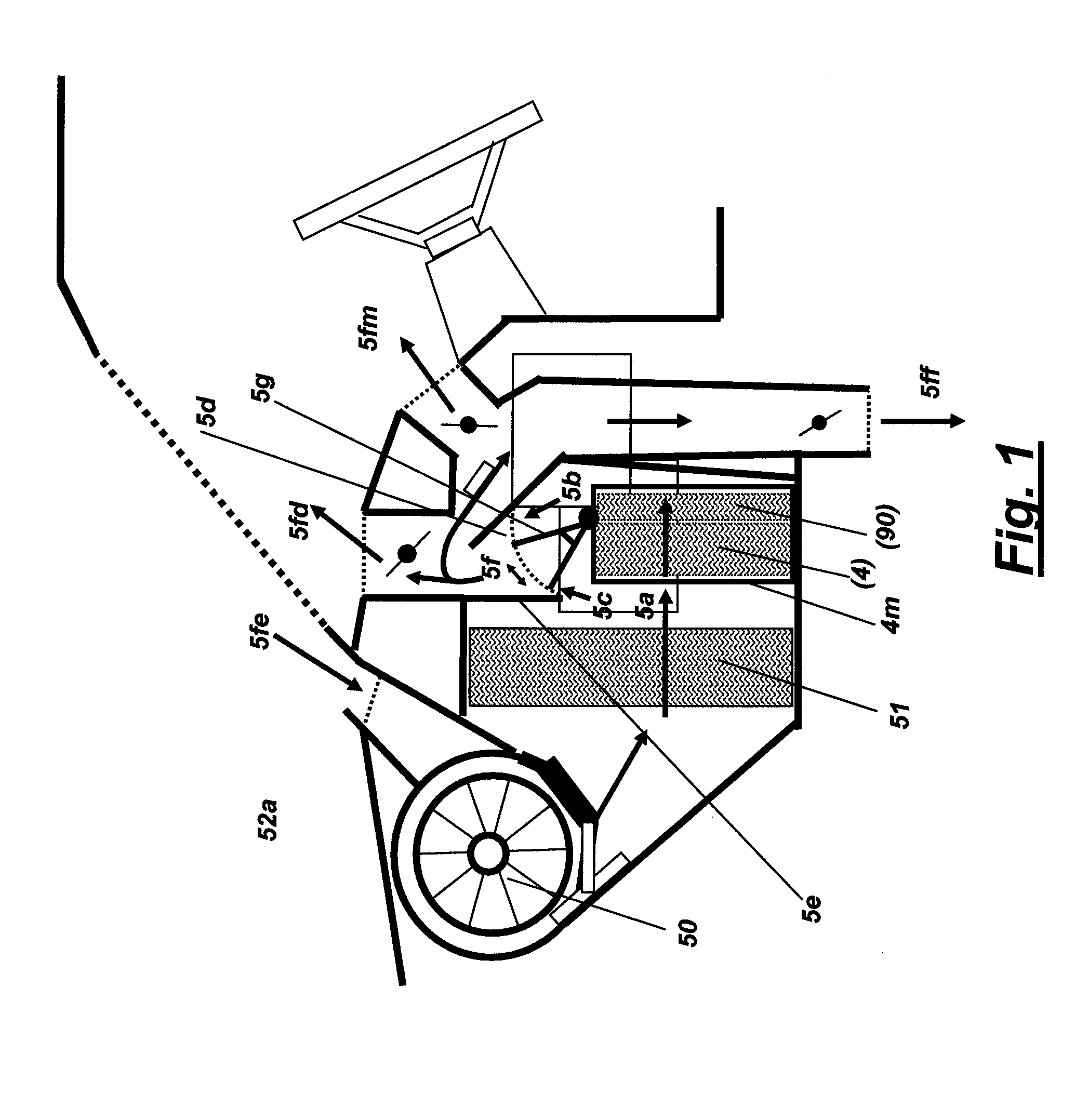High-performance heat exchanger for automotive vehicles, and heating/air-conditioning device including a high-performance heat exchanger
a heat exchanger and automotive technology, applied in the direction of tubular elements, lighting and heating apparatus, stationary conduit assemblies, etc., can solve the problems of increasing the fuel consumption in all operation situations, additional costs conditional on ptc, and affecting the operation efficiency of the system, so as to reduce the total fabrication cost and reduce the fuel consumption
- Summary
- Abstract
- Description
- Claims
- Application Information
AI Technical Summary
Benefits of technology
Problems solved by technology
Method used
Image
Examples
Embodiment Construction
[0052]The matrix volume V_matrix of the heat exchanger according to the invention can be ≧1-1.25 l or ≧1.3-1.4 l, for example ≧1.5-1.75 l or ≧1.8-2.0 l, particularly also ≧2.25-2.5 l. The matrix volume V_matrix can be ≦4-5 l or ≦3-3.5 l, for example ≦3.25-3.0 l or also ≦2.5-2.75 l, without being limited thereto. Preferably, the volume of the heat exchanger matrix is in a range between 1.4 l and 2.5 l.
[0053]The center-to-center spacing of the air-side heat exchanger fins t_fin can be ≦2.5-3 mm or ≦1.5-2 mm, particularly ≦1.1-1.25 mm, preferably ≦0.9-1 mm, particularly preferably ≦0.7-0.8 mm. The center-to-center spacing of the air-side heat exchanger fins t_fin can be ≧0.2-0.25 mm, ≧0.3-0.4 mm or ≧0.5-0.6 mm, without being limited thereto. The center-to-center spacing here is the spacing of the fins at the level of their centers, i.e. centrally between opposite tubes. The center-to-center spacing thus corresponds to the length of the finned tube sections divided by the number of fins...
PUM
 Login to View More
Login to View More Abstract
Description
Claims
Application Information
 Login to View More
Login to View More - R&D
- Intellectual Property
- Life Sciences
- Materials
- Tech Scout
- Unparalleled Data Quality
- Higher Quality Content
- 60% Fewer Hallucinations
Browse by: Latest US Patents, China's latest patents, Technical Efficacy Thesaurus, Application Domain, Technology Topic, Popular Technical Reports.
© 2025 PatSnap. All rights reserved.Legal|Privacy policy|Modern Slavery Act Transparency Statement|Sitemap|About US| Contact US: help@patsnap.com



